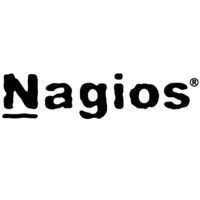Need advice about which tool to choose?Ask the StackShare community!
Add tool
Flapjack vs Nagios: What are the differences?
What is Flapjack? Monitoring notification routing + event processing system. Flapjack is a flexible monitoring notification routing system that handles: alert routing, alert summarisation, your standard operational tasks.
What is Nagios? Complete monitoring and alerting for servers, switches, applications, and services. Nagios is a host/service/network monitoring program written in C and released under the GNU General Public License.
Flapjack and Nagios belong to "Monitoring Tools" category of the tech stack.
Flapjack and Nagios are both open source tools. It seems that Flapjack with 656 GitHub stars and 91 forks on GitHub has more adoption than Nagios with 60 GitHub stars and 36 GitHub forks.
Decisions about Flapjack and Nagios
Matthias Fleschütz
Teamlead IT at NanoTemper Technologies · | 2 upvotes · 123.9K views
- free open source
- modern interface and architecture
- large community
- extendable I knew Nagios for decades but it was really outdated (by its architecture) at some point. That's why Icinga started first as a fork, not with Icinga2 it is completely built from scratch but backward-compatible with Nagios plugins. Now it has reached a state with which I am confident.
Get Advice from developers at your company using StackShare Enterprise. Sign up for StackShare Enterprise.
Learn MorePros of Flapjack
Pros of Nagios
Pros of Flapjack
Be the first to leave a pro
Pros of Nagios
- It just works53
- The standard28
- Customizable12
- The Most flexible monitoring system8
- Huge stack of free checks/plugins to choose from1
Sign up to add or upvote prosMake informed product decisions
What is Flapjack?
Flapjack is a flexible monitoring notification routing system that handles: alert routing, alert summarisation, your standard operational tasks.
What is Nagios?
Nagios is a host/service/network monitoring program written in C and
released under the GNU General Public License.
Need advice about which tool to choose?Ask the StackShare community!
Jobs that mention Flapjack and Nagios as a desired skillset
What companies use Flapjack?
What companies use Nagios?
What companies use Flapjack?
What companies use Nagios?
See which teams inside your own company are using Flapjack or Nagios.
Sign up for StackShare EnterpriseLearn MoreSign up to get full access to all the companiesMake informed product decisions
What tools integrate with Flapjack?
What tools integrate with Nagios?
What tools integrate with Flapjack?
No integrations found
Sign up to get full access to all the tool integrationsMake informed product decisions
Blog Posts
What are some alternatives to Flapjack and Nagios?
Kibana
Kibana is an open source (Apache Licensed), browser based analytics and search dashboard for Elasticsearch. Kibana is a snap to setup and start using. Kibana strives to be easy to get started with, while also being flexible and powerful, just like Elasticsearch.
Grafana
Grafana is a general purpose dashboard and graph composer. It's focused on providing rich ways to visualize time series metrics, mainly though graphs but supports other ways to visualize data through a pluggable panel architecture. It currently has rich support for for Graphite, InfluxDB and OpenTSDB. But supports other data sources via plugins.
Prometheus
Prometheus is a systems and service monitoring system. It collects metrics from configured targets at given intervals, evaluates rule expressions, displays the results, and can trigger alerts if some condition is observed to be true.
Zabbix
Zabbix is a mature and effortless enterprise-class open source monitoring solution for network monitoring and application monitoring of millions of metrics.
OpenCensus
It is a set of libraries for various languages that allow you to collect application metrics and distributed traces, then transfer the data to a backend of your choice in real time. This data can be analyzed by developers and admins to understand the health of the application and debug problems.

























